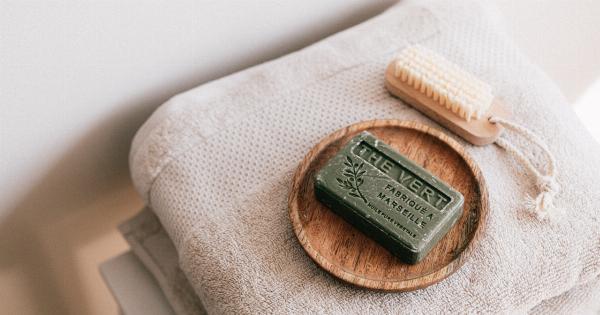When you think of towels, you typically associate them with cleanliness and hygiene. However, recent studies have revealed a shocking truth – your towels may be harboring more germs than anticipated.
In fact, dirty towels are transmitting a staggering 27 times more germs than expected, posing a serious risk to your health.
The Hidden Danger Lurking in Your Towels
It’s common knowledge that towels can become dirty over time, especially if they are not washed regularly. However, what many people fail to realize is the extent of the germs that can accumulate on these seemingly harmless pieces of fabric.
Research has shown that towels provide the perfect environment for bacteria to thrive and multiply.
Understanding the Science Behind the Germs
When we use towels, whether it’s for drying our hands, body, or face, we naturally transfer our bodily fluids onto them.
These fluids, such as sweat, dead skin cells, and even respiratory droplets, serve as a feast for bacteria and other microorganisms. The warm and moist environment of a damp towel further facilitates the growth and multiplication of these germs.
Furthermore, towels are often used by multiple individuals within a household, sharing the same set of germs and potentially spreading them further. This makes them a hotbed for pathogens that can cause various infections and illnesses.
The Major Germ Culprits
Several types of bacteria commonly found on dirty towels have been identified as significant contributors to the increased germ transmission. Some of the most prevalent culprits are:.
1. Escherichia coli (E. coli)
E. coli is a bacteria strain commonly found in the intestines of humans and animals. While most strains are harmless, some can cause severe intestinal infections, leading to symptoms like diarrhea, abdominal pain, and vomiting.
When towels come into contact with fecal matter, E. coli can spread rapidly and pose a risk to anyone who uses them.
2. Staphylococcus aureus (Staph)
The Staph bacteria are responsible for various infections, including skin infections, pneumonia, and even sepsis.
If Staph bacteria are present on a towel, they can easily transfer onto your skin and potentially enter your body through open wounds or cuts.
3. Streptococcus pyogenes (Strep)
Strep bacteria cause a wide range of infections, from mild sore throats and skin infections to severe conditions like strep throat, scarlet fever, and even rheumatic fever.
If contaminated towels come into contact with your face or any other body part, you could be at risk of contracting these infections.
The Importance of Towel Hygiene
To prevent the transmission of these harmful germs, it’s crucial to prioritize towel hygiene in your daily routine. Here are some essential practices to keep your towels clean and germ-free:.
1. Regular Washing
Make it a habit to wash your towels frequently. Using them for an extended period without washing allows bacteria to accumulate and multiply. Ideally, towels should be washed after three to four uses, especially if they are used by multiple individuals.
2. Proper Drying
After each use, hang your towel in a well-ventilated area to allow it to dry thoroughly. Moist environments provide a breeding ground for bacteria, so avoid leaving damp towels bunched up or crumpled on the floor or in a laundry bag.
3. Separate Towels
If you have multiple towels in your household, allocate a specific towel to each individual. This prevents the sharing of germs and reduces the risk of cross-contamination.
4. Avoid Using Towels for Extended Periods
Using the same towel for an extended period can allow bacteria to grow. Replace your towels regularly, especially if they start to feel damp or emit an unpleasant odor.
5. Laundering Practices
When washing your towels, use hot water and an adequate amount of detergent to ensure thorough cleaning and disinfection. If possible, adding a disinfectant like chlorine bleach or white vinegar to the wash can help eliminate any lingering germs.
6. Hand Hygiene
Always wash your hands thoroughly before and after using a towel. This helps minimize the transfer of germs and ensures personal hygiene.
7. Avoid Towels in Public Areas
Towels found in public places, such as gyms, swimming pools, and hotels, are more likely to harbor a higher number of germs due to the sheer volume of users.
Whenever possible, carry your own towel when visiting such places to reduce the risk of exposure.
8. Teach Proper Towel Usage
It’s essential to educate everyone in your household about the importance of maintaining towel hygiene. Instill proper usage practices, such as avoiding wiping dirty surfaces or sharing towels, to minimize the spread of germs.
9. Consider Towel Alternatives
If you’re concerned about the hygiene of traditional towels, consider switching to microfiber towels or disposable paper towels.
Microfiber towels have antimicrobial properties and dry quickly, while disposable paper towels eliminate the need for laundering altogether.
10. Trust Your Senses
It’s essential to trust your instincts and common sense. If a towel looks or smells dirty, it’s best to retire it and grab a fresh, clean one.
Protect Your Health with Clean Towels
By following these simple but effective towel hygiene practices, you can significantly reduce the risk of germ transmission and protect your health.
Don’t overlook the significance of clean towels in your daily routine and remember that a little extra care can go a long way in maintaining your well-being.





























